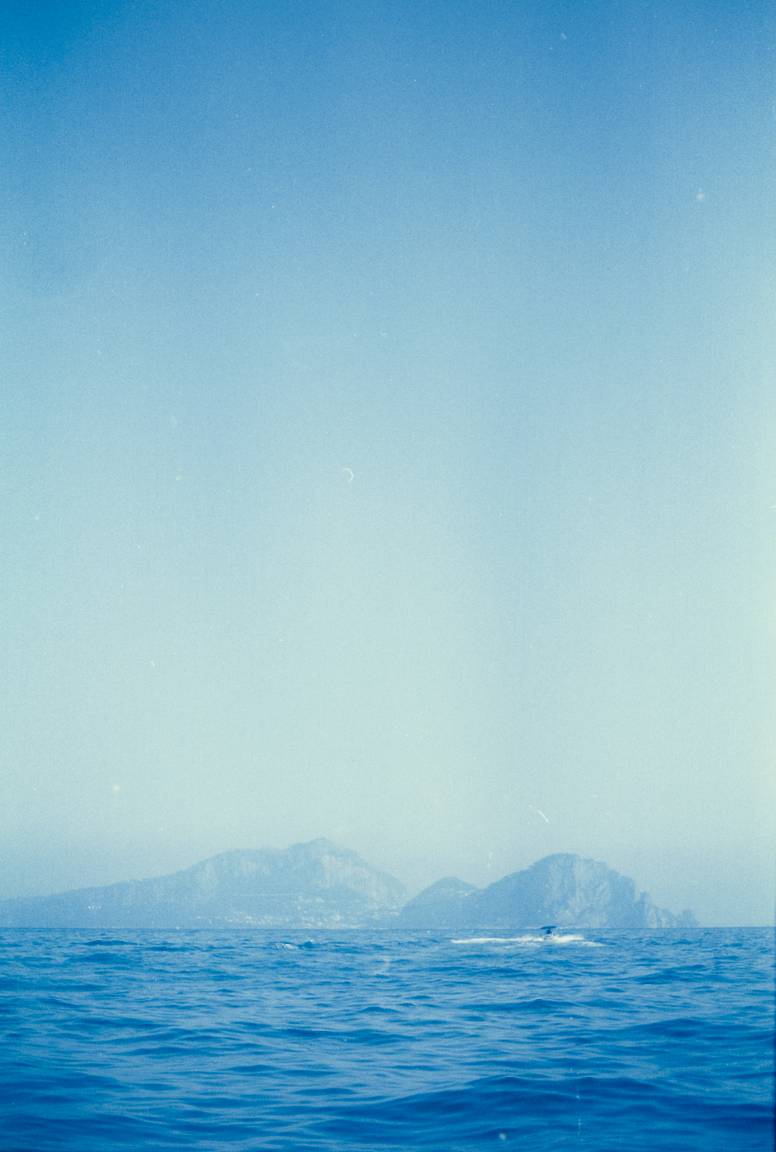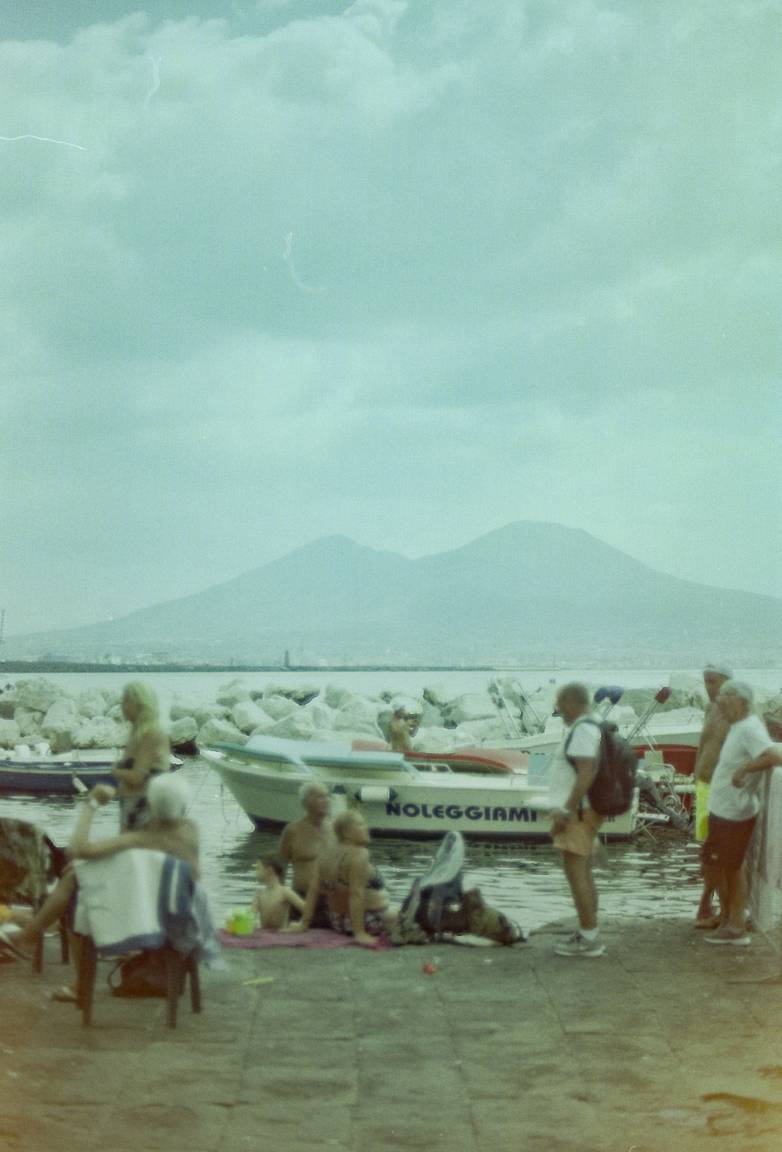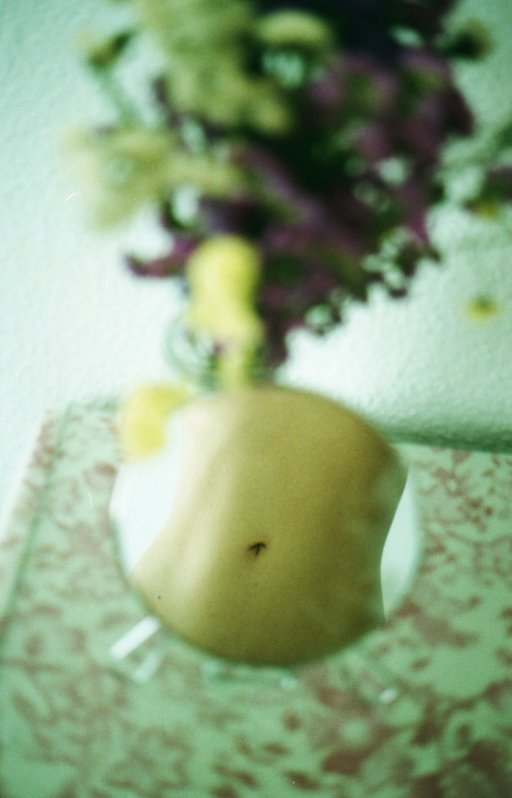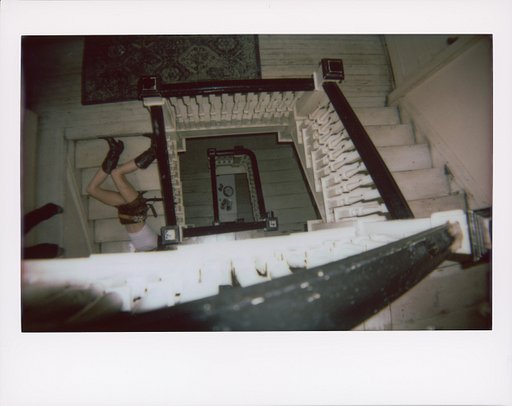The Gulf of Naples Through the Analogue Shots of Sefora Castaldo
9 Share TweetSefora Castaldo has an affinity for things of old and vintage, and using analogue means for photography allows her to further express this love. In this interview, Sefora narrates to us how she decided to quit everything to pursue her true passion -- photography -- and revealed her upcoming social photography projects.
Hi Sefora, tell us about your photographic background. How did your journey into the world of photography begin?
My first camera was an Olympus when I was 10 years old. My interest in photography did actually start a bit later, when I was 16 years old. I was attending a summer camp with other friends and one of them had brought her SLR with her. During that week my friends and I had promised ourselves to document every activity of the camp, and I don't know how, but I found myself with my friend's SLR around my neck. After that week it was love! Back home I asked my parents to buy me one. My father, who has always taught me the value of things, looked at me and said, "If you want one, save up and buy it." That's exactly how it went, although it took me quite a while since I wasn't working and had to save up the money they gave me on birthdays or special occasions.
I was 19 years old when I got my first SLR 00 three years of saving up all the money to buy it. At university, after studying for two years of economics, I quit and entered the Academy of Fine Arts in Rome and now I am about to get my academic diploma in Photography & Video. In the last three years, I've specialized in portraiture and I'm starting to move towards editorials and fashion campaigns, although there's still a long way to go.
On your Instagram profile you have mainly digital shots, but recently you revealed to us that you are preparing your university thesis on vintage and you have even written a whole chapter on toy cameras and the Lomographic approach: how did your passion for analogue and the Lomographic approach begin?
Actually, I also have a profile dedicated entirely to analogue photography, although it only has a few followers. It's been about two years that I've developed a love for analogue and instant photography, so much so that, as I told you, I decided to write my final university thesis about it. In fact, the thesis is about VINTAGE and the RETURN TO THE PAST and I expanded it to video, art, architecture, and fashion, as well as the photographic industry.
My passion for analogue was born from the fact that I was tired of the digital perfection that can be obtained thanks to photo editing programs as well as the sophistication of the cameras. I was tired of the perfect photo without smudging and tired of the fact of being able to take 10 pictures in a second and because of this, I almost reached a point where I would not be thinking before I pressed the release button, and that's where analogue saved me: you don't know if you've taken the wrong picture or not until you develop the film. It forces you to think before you shoot because you only have 24 or 36 poses in a roll. You can't afford to make mistakes.
My interest towards Lomography and toy cameras developed more or less for the same reasons, but I was also interested in the artistic side. With Lomography films you never know what colors are going to come out, on an artistic level, new worlds opened up to me that I didn't think existed. When I developed the rolls that I shot with the Lomography Color Negative 400 last summer, I was surprised by the colors that the film rendered: I found that those colors were exactly those of my Naples and the coast that I love so much. Toy cameras on the other hand are completely plastic objects in which there is nothing technological: in this case only the film inside, your eye and your imagination count.
What's your favorite film camera?
My favorite analogue camera is the NIKON FM2 which unfortunately I do not own, but a dear friend of mine lends it to me every time I ask her. That's the one I use to shoot the projects I care about the most.
What kind of gear do you always bring with you when you travel?
When I travel, the gear I choose to bring depends a lot on who I'm with and the reason for the trip: if I'm traveling with my family or friends, I tend to travel light so I only bring a mirrorless and, at most, an instant camera, but if I'm traveling with other photographers I tend to bring everything I have, SLR, mirrorless, drone, and instant cameras. Only once with my family did I dare to bring a tripod when I went to France a few years ago: I was always behind them and every time I reached them they were visibly annoyed. My suggestion is: if you travel to take photographs, you should always travel with photographers or friends who understand your photography craze.
Who are the artists you follow and from whom-what do you draw inspiration for your photos?
The artists that today transmit me the most and from whom I tend to take the most are many, but I just mention two: Marta Bevacqua and Nicholas Fols. These two are, speaking of contemporary photographers, the ones who generally make me want to give up everything and say: no, photography is not for me. Marta manages to convey so much with so little, while Nicholas is almost a painter. If I can then refer to older photographers, then I would say: Peter Lindbergh, Annie Leibovitz and Scianna. But you could stand here and list photographers for hours.
For this series you used our film the Lomography Color Negative 400 ISO. What camera did you use?
I tested the film Color Negative 400 on my favorite camera: the NIKON FM2 with 50mm 1.4.
What are the features that impressed you the most about this film?
As I mentioned before, the thing that struck me the most was the rendering of colors, especially in the edges when I shot under full sun.
In this series you have captured several views of the beautiful Gulf of Naples. What connection do you have with this land?
I was born and raised in the province of Caserta, I say province of Caserta, but my town is very near the province of Naples and all my relatives lived in the province of Naples. When I was 17, because of my parents' job I had to move to Rome. I used to go to Naples during my school vacations. With my classmates, we would take the train from the station a few kilometers from our high school, and go to the city. Naples is my home, it's my land, my origins. No matter how many times I visit those places, there will always be something to keep me amazed: from the people who dive off the bridge leading to Castel Dell'Ovo every summer, to those who sunbathe on the rocks in the seafront, to the slush maker who offers you a lemon slush because "Miss, I can see you flushed". Naples, like the whole South of Italy, is a different world. A wonderful world that very often is misunderstood and loaded with prejudices.
Do you have any interesting upcoming projects or collaborations?
There is a project that is taking shape and that I have decided to shoot it all in analogue. I can't really talk about it because it will be in collaboration with a social movement that deals with collecting stories of catcalling and more. For the moment there is only the idea behind and the format we will use. I haven't defined anything precise yet because this idea took shape just before 2021 and I, shortly after, found myself immersed in the fantastic world of the university student struggle with the last exams and the thesis, but the idea is to realize it between April and December, and then submit it to some association and maybe make an exhibition and publish it. I know it's a very delicate topic and that often goes unnoticed, but that's exactly why I want to do it.
Show us your favorite photo. Can you tell us the story behind it?
If you ask me for a point-blank answer then I'll tell you I have two, which basically have the same meaning. One I took at Kyoto Garden in London in September 2019 and it depicts a Koi Carp. The other photo I took in November 2020 at Tiber Island in Rome and it's a boy running. I have them both printed and hanging in my studio. For the Japanese, the Koi Carp is a symbol of courage. Every time I look at that photo I tell myself not to give up and to go straight on the path I've chosen, despite everything and everyone. The other one is connected to the carp because in addition to the boy running (although blurred) you can see flying seagulls. It gives me a sense of freedom that in 2020 we were denied because of the pandemic. In my opinion "courage and freedom" go hand in hand.
Sefora's decision to quit her previous studies and follow her true passion, photography, speaks for itself as a woman artist who #ChooseToChallenge. We hope her courage inspired you as we celebrate Women's Month. Visit Sefora's Instagram to see more of her photography work.
written by melissaperitore on 2021-03-16 #gear #people #lomography-color-negative-400 #landscape-photography #sefora-castaldo






































No Comments